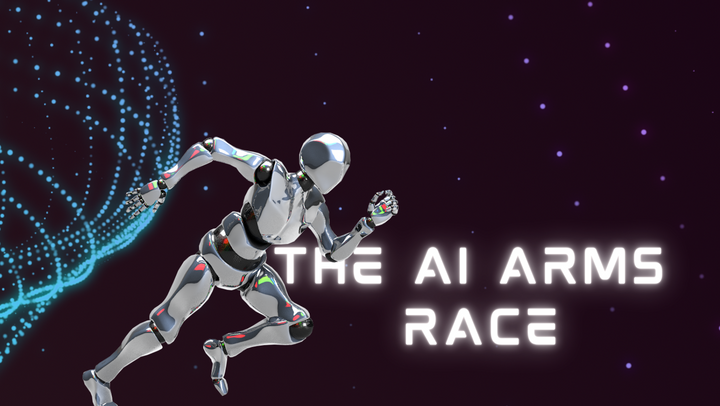We Keep Talking About AI - But What Does It Actually Mean?

Recently, we have been speaking more and more about AI, chatbots and where we are headed in this digital revolution. Different elements of AI are dominating the headlines right now. We have ChatGPT, Google's BARD and many other developments and innovations. Whilst it is great to keep talking about it, it is also vital that we understand what each part of these systems and developments mean. Here is a round-up of some of the top AI jargon.
LLM
Large language models are computer programs that have been trained on vast amounts of text data and are capable of generating human-like language. These models use sophisticated algorithms to analyse text data and learn the patterns and structures of language, enabling them to generate coherent and meaningful text.
One of the most well-known examples of large language models is the GPT (Generative Pre-trained Transformer) series developed by OpenAI. These models have been trained on billions of words from the internet, allowing them to generate high-quality text in a variety of styles and formats. Large language models can be used for a wide range of applications, including language translation, chatbots, and content generation. For example, they can be used to generate product descriptions, news articles, and even entire books.
While large language models have many potential benefits, they also raise important ethical concerns. For example, there is a risk that these models could be used to spread disinformation or manipulate public opinion. Additionally, there are concerns about the environmental impact of training these models, as they require vast amounts of computing power and energy.
Overall, large language models are a powerful tool for generating human-like language, but their use must be carefully considered to ensure that they are used ethically and responsibly.
Neural Networks
Neural networks have become one of the most powerful and popular machine learning techniques in recent years, and for good reason. These algorithms have demonstrated remarkable ability to recognise complex patterns and make accurate predictions based on large and complex datasets.
At its core, a neural network is a series of connected layers of artificial neurons, which are modelled after the neurons in the human brain. Each neuron receives input from multiple other neurons, applies a mathematical function to that input, and produces an output signal that is passed on to other neurons in the network. The connections between neurons are weighted, meaning that the strength of the connection between two neurons can be adjusted during training. By adjusting these weights, the neural network can learn to recognize patterns and make predictions based on input data.
One of the key advantages of neural networks is their ability to automatically learn features from raw data, without the need for manual feature engineering. For example, a neural network trained on images can learn to recognize edges, shapes, and other visual features that are important for classification tasks.
Neural networks have been successfully applied to a wide range of tasks, including image and speech recognition, natural language processing, and even game playing. They have also been used in a variety of industries, from finance to healthcare, where they have shown promise in areas such as fraud detection and personalised medicine.
“Black Box”
Neural networks have become increasingly popular in recent years due to their ability to learn and perform complex tasks. One type of neural network that has gained a lot of attention is the black box neural network.
The term "black box" means that the more skilled they become, the more challenging it is to understand how they operate. GPT-3 is composed of 175 billion parameters that indicate the strength of one neuron's impact on another. However, it is nearly impossible to determine the effect of any given parameter on the entire language model.
On top of this, the fundamental structure of neural networks remains somewhat enigmatic. Although we can sometimes detect some patterns, such as the "T" in GPT, which represents "Transformer," a technique used to connect the neural network and enable it to mimic short-term memory, which is useful when reading a sentence word by word. On the other hand, other components of neural network design are based on experimentation and error, such as squeezing the neural network's thought process through a bottleneck of only a few neurons, which can enhance the output's quality. However, we do not know why this approach works; it just does.
As someone who strongly believes that artificial intelligence can make our lives better, I recognise the importance of improving this technology. One fascinating aspect of the AI discussion is the issue of costs. OpenAI initially used a non-profit model, but had to switch to a different approach due to the large amount of money needed.
Compute
Creating a new AI model can be very expensive. It has been reported that the final version of GPT-3 required around $10 million worth of computing time. The main problem is that access to the necessary computing power is limited, so only tech giants like Google and Microsoft can create large-scale tools like language models.
The United States, China, and the United Kingdom are among the leading countries in the field of AI. The UK is still considered a top contender, largely due to the "Golden Triangle" formed by Oxford, Cambridge, and London. However, academics in the UK often struggle to access the computing resources they need to create cutting-edge AI technology. This ultimately gives American and Chinese corporations an advantage in the AI race. As a result, there is a call for a government-funded "BritGPT" project to level the playing field and allow the UK to compete on a more equal footing.
Artificial intelligence (AI) has transformed the way we live, work, and communicate with each other. From personal assistants to advanced systems used in healthcare and finance, AI is changing the world at an unprecedented pace. While AI has its benefits, it also raises ethical and social concerns.
As AI continues to advance, it is vital to remember that it is a tool that can be used to augment and enhance our abilities, enabling us to solve complex problems and make more informed decisions. By harnessing the power of AI, we can unlock new possibilities for innovation and progress, but we must do so in a way that is mindful of the impact it has on our society and the world at large.
As we move forward, it is clear that AI will continue to shape our future in profound ways. It is up to us to ensure that we use this technology wisely, with a focus on improving the human experience and creating a better world for generations to come. By doing so, we can unlock the full potential of AI and pave the way for a brighter and more prosperous future.
Tej Kohli is a philanthropist, technologist and investor.
Find out more about Tej Kohli: Tej Kohli the technologist investing in human triumphand Tej Kohli the London tycoon with a generous streak.
| Follow: Twitter | Instagram | LinkedIn | Facebook | YouTube |
Watch more:




Comments ()